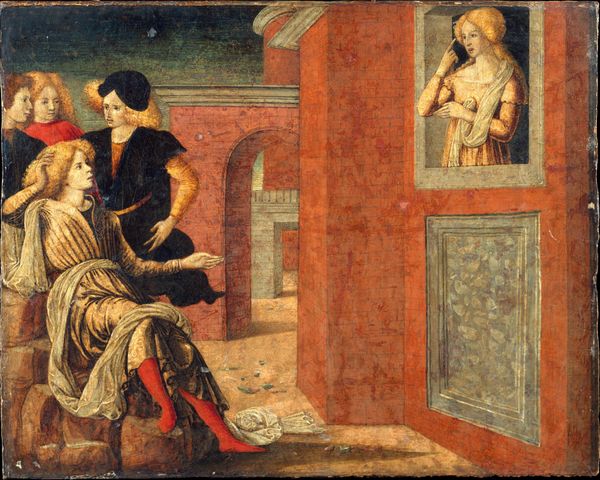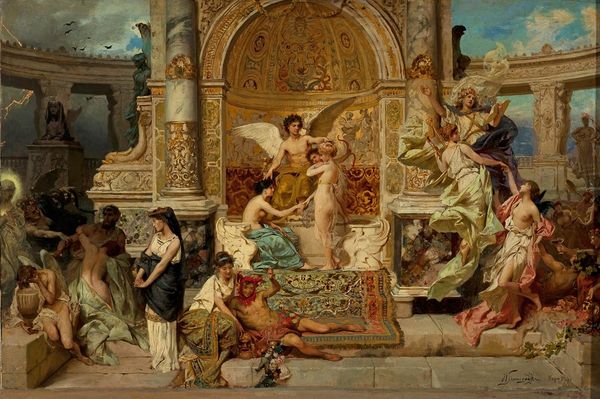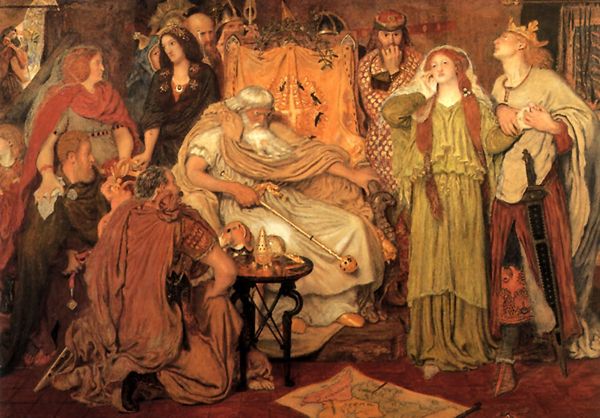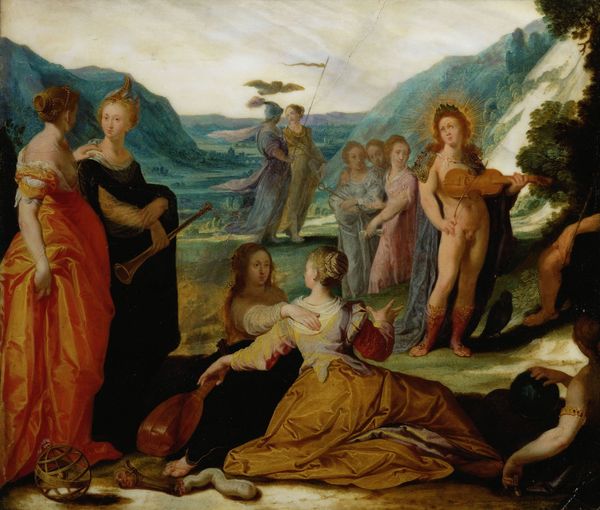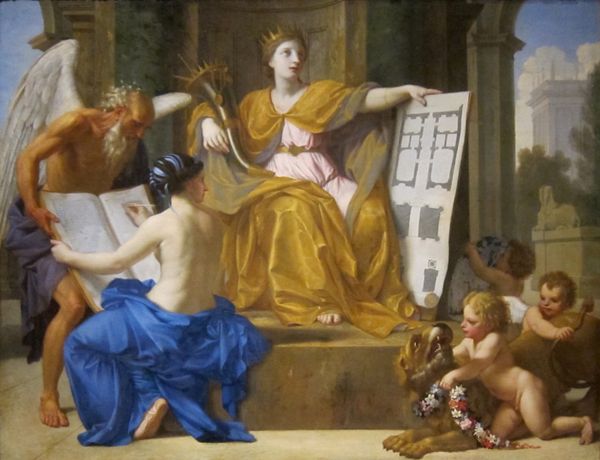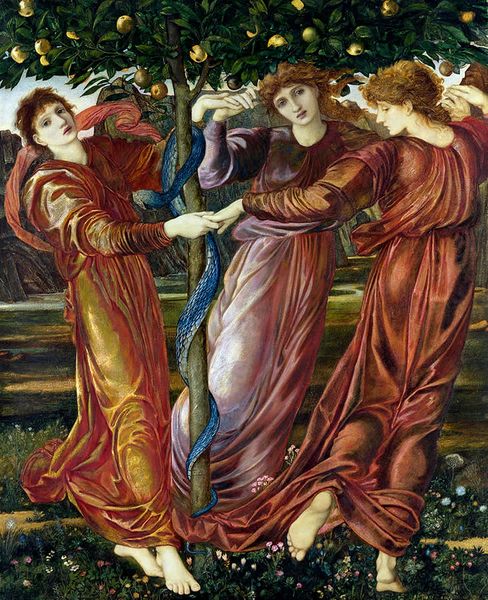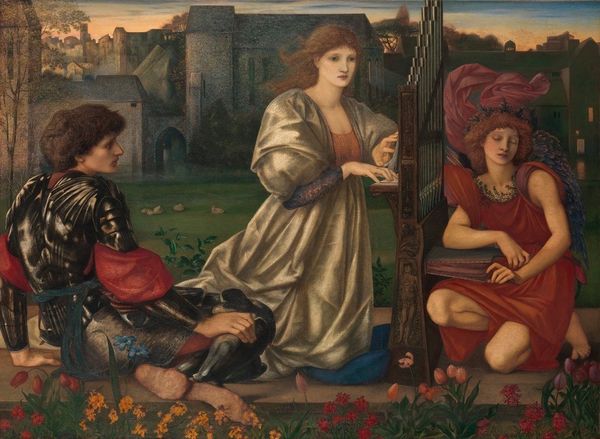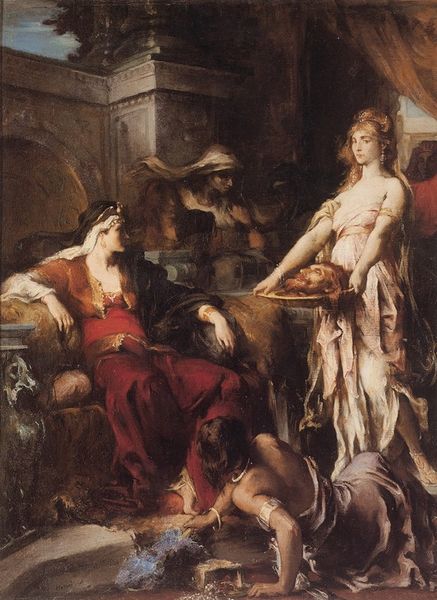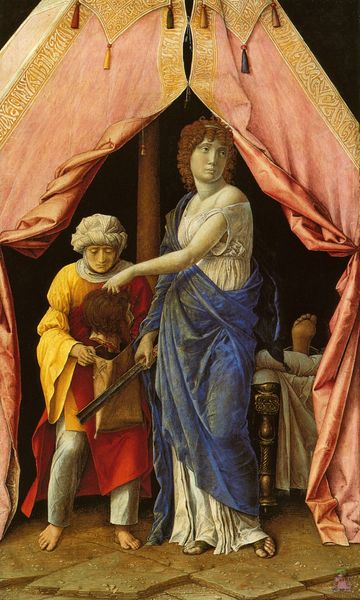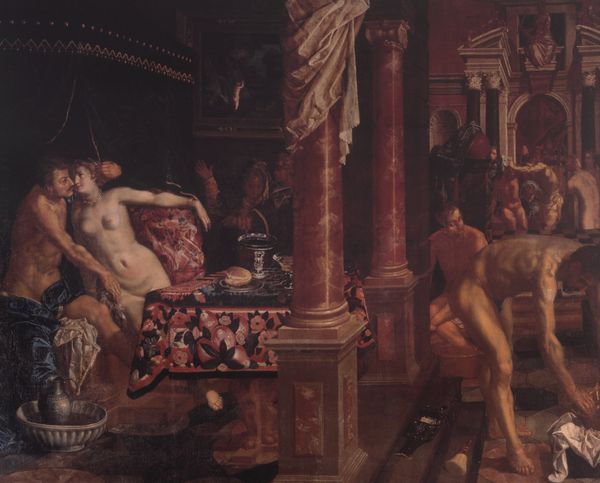
tempera, painting
#
portrait
#
gouache
#
allegory
#
narrative-art
#
fantasy art
#
tempera
#
painting
#
figuration
#
mythology
#
symbolism
#
history-painting
#
pre-raphaelites
#
erotic-art
Dimensions: 122 x 183 cm
Copyright: Public domain
Editor: So, here we have "Laus Veneris" painted by Edward Burne-Jones in 1868 using tempera and gouache. The overall scene feels very dreamlike. The layering of textures and the way the figures are arranged gives it an almost theatrical quality. What can you tell me about this piece? Curator: Let's consider the materials themselves. Burne-Jones's choice of tempera and gouache, rather than oils, speaks volumes. Tempera, traditionally associated with early Renaissance altarpieces, connects this work to a specific history of production and devotional labor. And think about the gouache – the opacity, the chalkiness. How does that affect the viewer’s perception compared to the sheen of oil paint? Editor: That's a good point, it gives a more muted effect, kind of flat. It contrasts with what I'd expect from such a sensuous subject matter. Curator: Precisely! That friction is key. He's deliberately subverting expectations. He evokes sensuality and opulence not through surface sheen, but through density of detail, consider the clothing of the musicians, likely referenced directly from real, heavily adorned garments from his era. Editor: So, you're saying it's about more than just depicting a mythological scene, it's also about the materials and process conveying a specific message? Curator: Absolutely. Burne-Jones is engaging in a dialogue with the history of painting and the prevailing aesthetic values of his time. The means of production are just as crucial as the subject matter. How do you think a contemporary audience would view this today, knowing more about production and industrial manufacture than Burne-Jones's original viewers? Editor: I think focusing on the materiality definitely provides an alternative framework. Thanks for illuminating that, I'm learning to see the artwork in another perspective. Curator: And I am enjoying sharing a materialist approach to appreciating artwork.
Comments
No comments
Be the first to comment and join the conversation on the ultimate creative platform.
